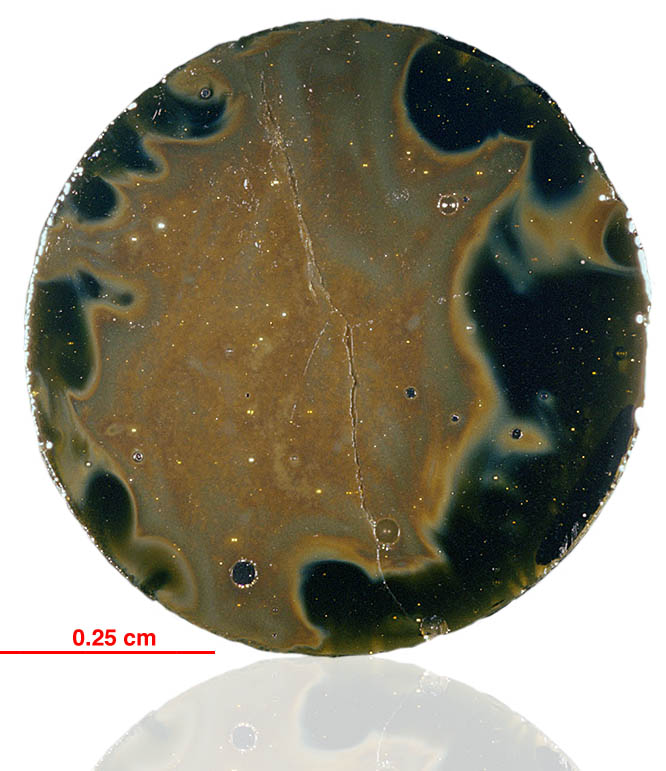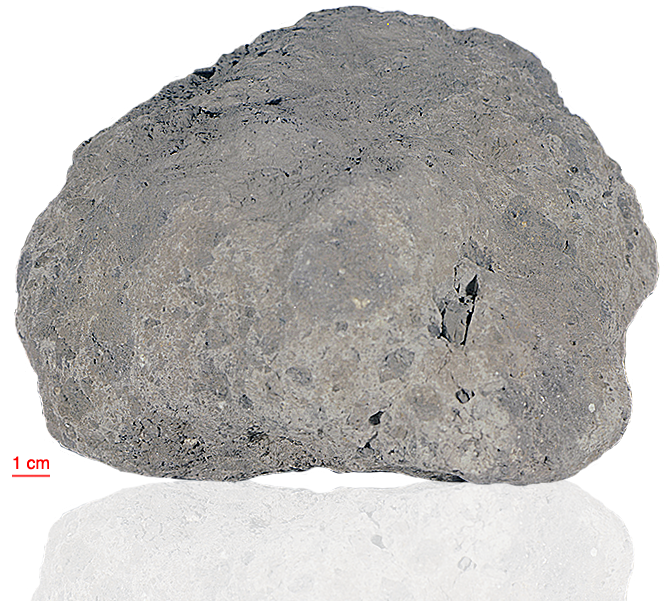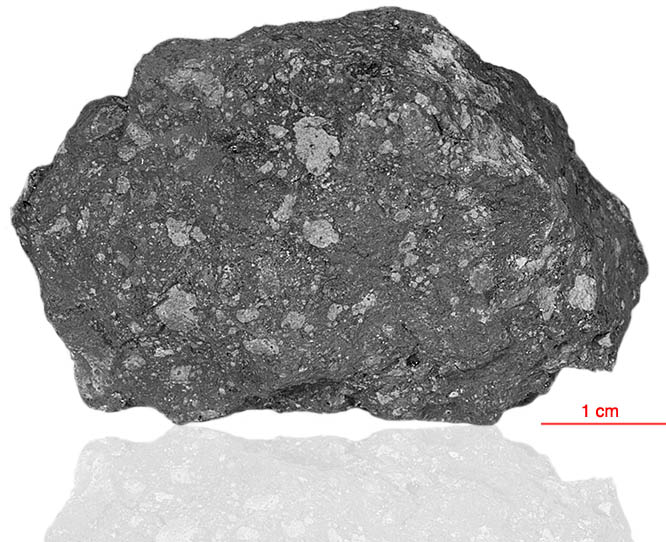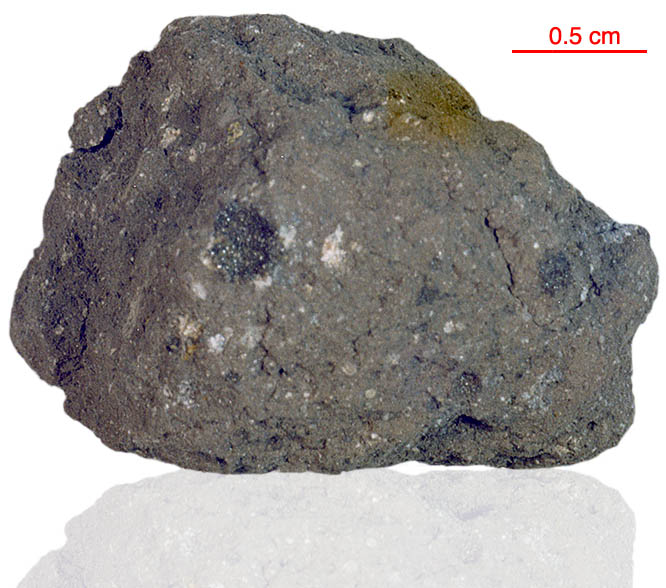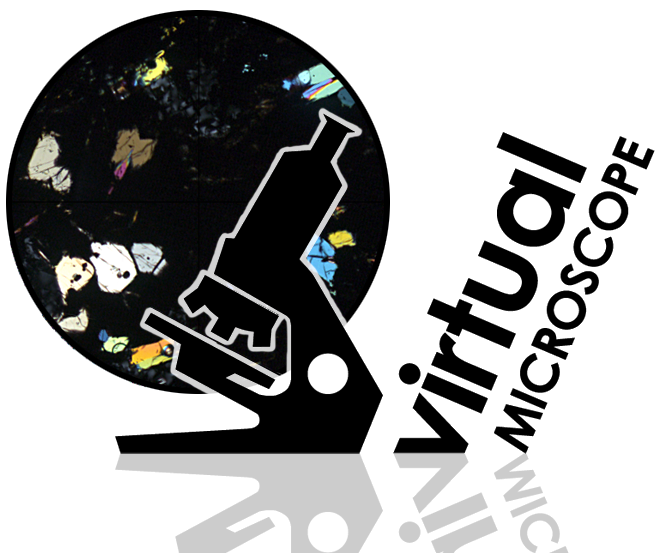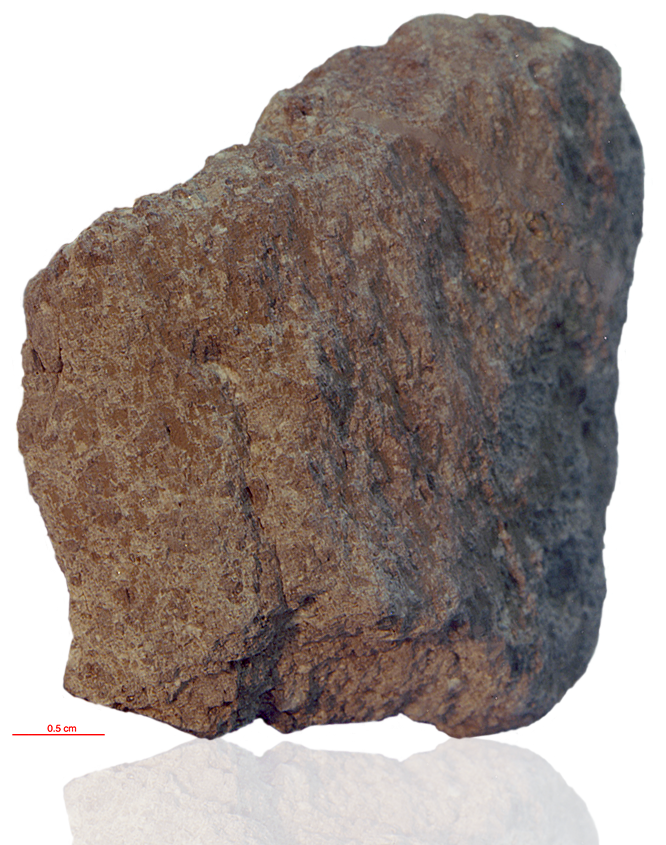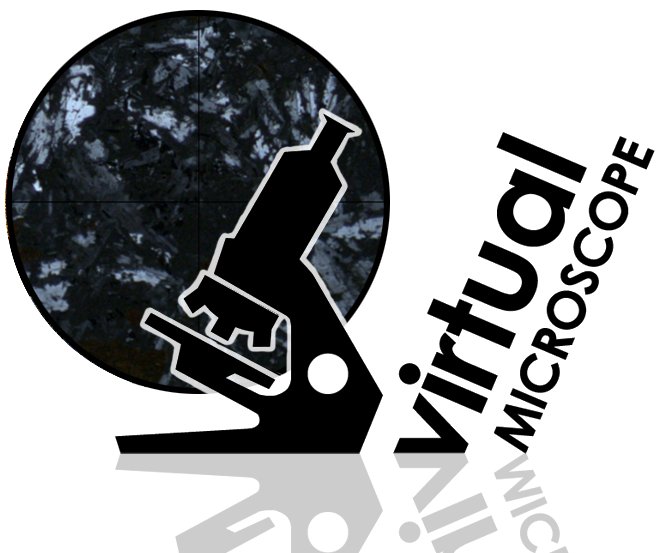
Fact sheet
Most particles of this soil fall into one of three broad groups: About 92% of them are fragments of impact melt breccias, fragmental microbreccias, and regolith breccias. A small group appears to be igneous and monomict. One particular fragment (14161,7373) is a whitlockite-rich quartz monzogabbro that shows textural evidence for the formation of granitic material by silicate liquid immiscibility.
Our thin section is a basalt that has been intensively studied. The orange material visible in plane polarised light is resin that has been damaged during electron beam bombardment. Laser damage (pits) are also visible in the largest phenocryst (see rotation 2). Our section is also thinner than normal (i.e. > 30 microns).
Further details of this and other Apollo samples are here: http://curator.jsc.nasa.gov/lunar/
The Apollo 14 landing site was in a region formed by impact-basin debris.
Most of the 42 kilograms of rocks and soil collected on Apollo 14 are breccias (rocks that are composed of fragments of other, older rocks). In some cases, the rock fragments that form a breccia are themselves breccias. Such rocks obviously have experienced complex histories with multiple generations of impact events. Some breccias were heated enough that some of the material in the rock was melted.
Apollo 14 was launched on 31 January 1971.

